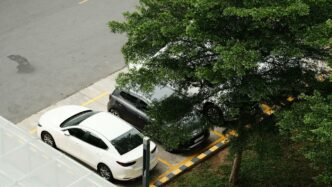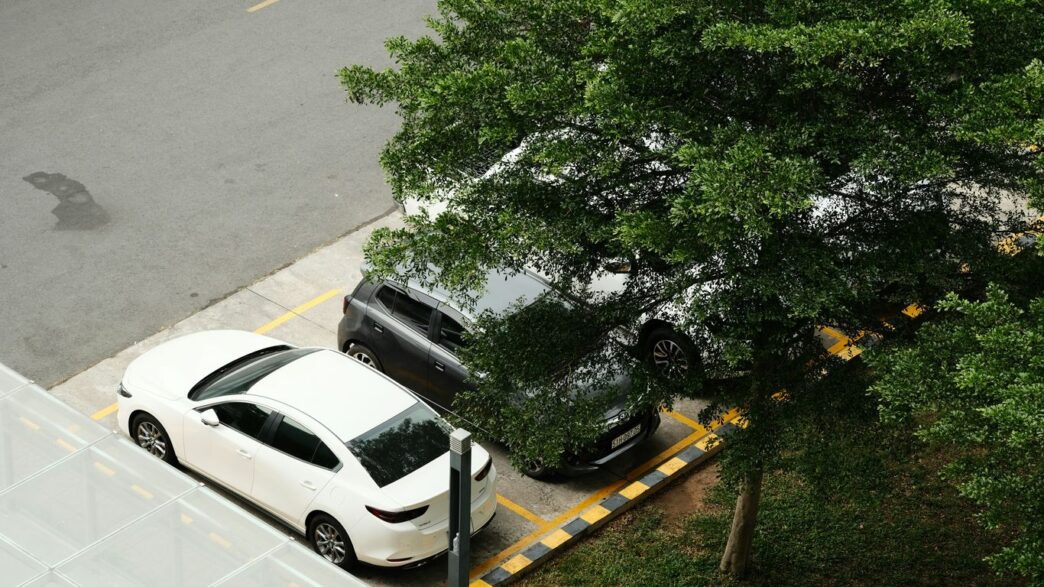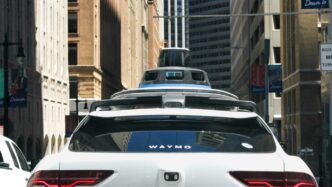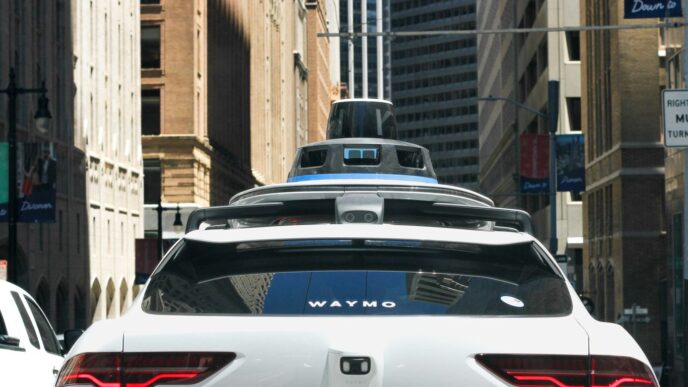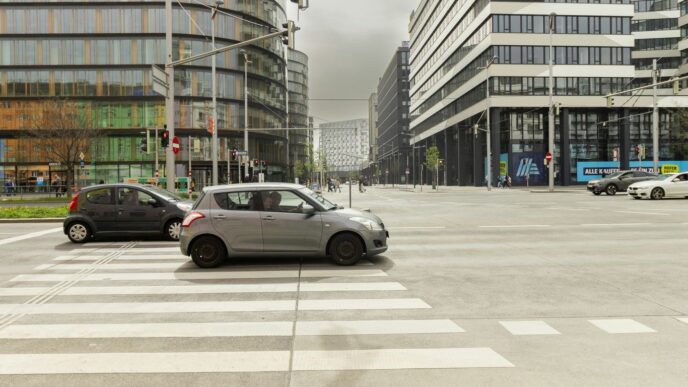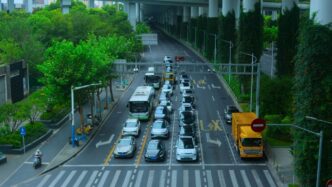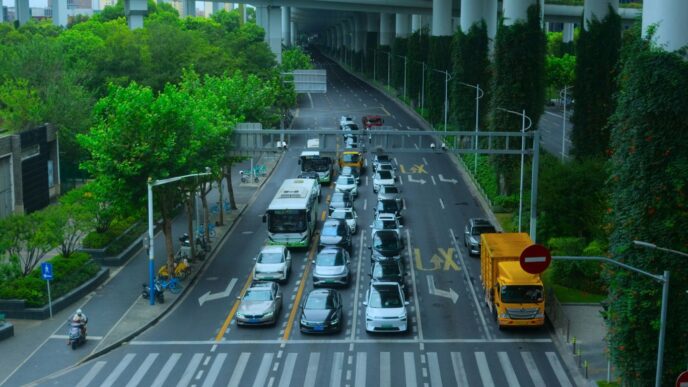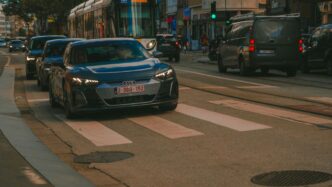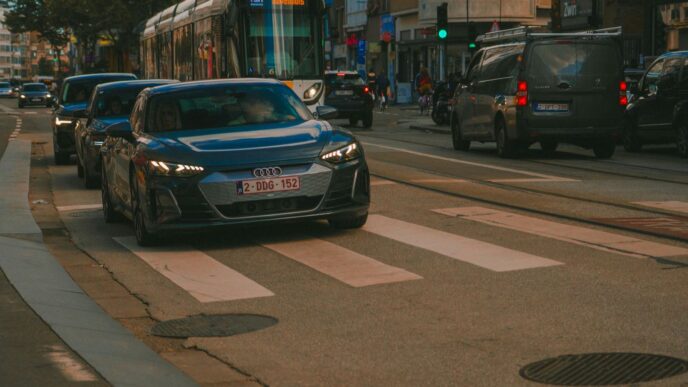The Evolution of Smart Parking Technologies
Remember the days of circling the block endlessly, hoping for a miracle parking spot? Those times are fading fast, thanks to some pretty clever tech. Smart parking isn’t just a buzzword anymore; it’s actively changing how we find and use parking spaces.
Leveraging Sensors and IoT for Real-Time Data
Think of sensors as the eyes and ears of the smart parking world. These little gadgets, often embedded in the pavement or mounted overhead, can tell if a spot is taken or empty. They’re connected through the Internet of Things (IoT), which basically means they can talk to each other and send information back to a central system. This real-time data is gold. It means apps can show you exactly where an open spot is, saving you time and a whole lot of frustration.
Here’s a quick look at what these sensors do:
- Detect Vehicle Presence: They know when a car pulls in and when it leaves.
- Measure Occupancy: They report if a space is free or occupied.
- Gather Usage Patterns: Over time, they help understand when and where parking is busiest.
The Role of Mobile Applications in Parking
Mobile apps are the driver’s direct link to smart parking. Forget fumbling for change or hunting down a pay station. With an app, you can usually find available spots, reserve them, and pay for your parking session, all from your phone. It’s made the whole process way simpler. You can often extend your parking time remotely too, which is a lifesaver if you’re running late.
Key app features include:
- Real-time Spot Availability: Maps showing open spaces nearby.
- In-App Payments: Securely pay for parking without leaving your car.
- Notifications: Reminders when your parking time is about to expire.
- Reservation Options: Book a spot in advance for busy times.
Advancements in License Plate Recognition Systems
License Plate Recognition (LPR) systems are another big piece of the puzzle. These cameras automatically read license plates. They can be used for a few things. For one, they can streamline entry and exit from parking lots, especially in secure areas. They also help with enforcement, automatically flagging vehicles that have overstayed their welcome or are parked illegally. This technology is making parking management more efficient and secure by reducing the need for manual checks. Some systems even use LPR to automatically bill drivers for the exact time they’ve parked, making payment completely hands-off.
Integrating Intelligence into Parking Management
So, parking isn’t just about finding a spot anymore. We’re seeing a big shift where systems are getting genuinely smart, using data and clever algorithms to make things work better for everyone. It’s like the parking lot finally got a brain.
Artificial Intelligence for Predictive Analytics
Think about it: instead of just knowing if a spot is open right now, AI can actually guess what parking will be like later. It looks at past data – when are the busy times, where do people usually park, how long do they stay – and starts to predict future demand. This means parking operators can get ahead of the game, maybe opening up more areas during peak hours or knowing when to expect a lull. It’s about being proactive, not just reactive.
AI-Powered Parking Space Allocation and Pricing
This is where things get really interesting. AI can dynamically adjust how parking spots are used and even how much they cost. If a big event is happening downtown, AI could automatically raise prices slightly in that area to manage demand, while keeping prices lower in less busy zones. It can also help guide drivers to areas that have more availability, preventing those frustrating traffic jams caused by people circling for a spot. It’s a bit like a smart traffic cop for parking.
Here’s a quick look at how AI can help:
- Predicting Peak Times: Knowing when the most cars will need parking.
- Dynamic Pricing: Adjusting costs based on real-time demand.
- Optimizing Flow: Directing drivers to less crowded sections.
- Resource Management: Helping operators plan staffing and maintenance.
Personalized Parking Recommendations
Imagine your parking app not just showing you available spots, but suggesting the best spot for you. AI can learn your habits. Do you always look for the cheapest option? Or maybe you prefer to be close to a specific entrance? Or perhaps you need a spot with EV charging? The app could learn this and start recommending spots that fit your personal preferences, making the whole process feel much more tailored and less like a chore.
The Future of Parking with Autonomous Vehicles
Okay, so self-driving cars. They’re not just science fiction anymore, right? And as they start showing up more and more on our streets, parking is going to have to change. Big time.
Seamless Vehicle-to-Parking Communication
Think about it: your car, all by itself, talking to the parking system. No more circling the block hoping for a spot. The car will know exactly where to go, maybe even before you get out. This direct line of communication between your car and the parking infrastructure is the next big step. It means less waiting, less frustration, and a much smoother arrival. It’s like the parking lot is a personal valet, but way more efficient.
Optimizing Parking Structures for Self-Driving Cars
Parking garages might look a bit different too. Since cars won’t need human drivers to maneuver them, we can pack them in tighter. Imagine narrower lanes and tighter spots because the car can park itself perfectly. This could mean:
- More cars fitting into the same space.
- Less wasted room between vehicles.
- Potentially smaller, more compact parking facilities.
This is all about making the most of the space we have, especially in crowded cities. It’s a smart way to handle more vehicles without needing to build massive new structures.
Autonomous Vehicle Drop-off and Remote Parking
Here’s a cool one: your self-driving car could drop you off right at the door and then go park itself. And get this – it might not even park nearby. It could drive itself to a cheaper, less congested lot further away. This frees up prime parking spots closer to destinations for people who really need them. It also means:
- You get dropped off exactly where you need to be.
- Your car handles the parking hassle.
- Cities can rethink where parking is even necessary, potentially turning some prime spots into parks or other public spaces.
Enhancing Urban Mobility with Smart Parking
Cities are getting bigger, and let’s be honest, finding a parking spot can feel like a treasure hunt sometimes. But smart parking is changing all that, making our cities run a bit smoother. It’s not just about making drivers’ lives easier, though that’s a big part of it. It’s about how we plan our cities and make them work better for everyone.
Data-Driven Urban Planning and Infrastructure
Think about all the data these smart parking systems collect. They know when and where people park, how long they stay, and even what times are busiest. City planners can use this information to make smarter decisions. Instead of guessing where to put new roads or parking garages, they can look at actual usage patterns. This means we can build what we actually need, where we actually need it.
- Identifying high-demand areas: Planners can see which neighborhoods are constantly packed and might need more parking or better public transport options.
- Optimizing traffic flow: By understanding parking habits, cities can adjust traffic light timings or create one-way streets to reduce bottlenecks.
- Informing infrastructure development: Data can guide decisions on building new parking structures, expanding public transit, or even designating more bike lanes.
This kind of data helps us build cities that are more efficient and less frustrating to get around in.
Reducing Congestion and Emissions
We’ve all been stuck in traffic, circling the block looking for a spot. That wasted time adds up, and so does the pollution. Smart parking helps by guiding drivers directly to available spaces. This means less time spent driving around aimlessly, which directly translates to less traffic congestion and fewer harmful emissions. It’s a win-win for drivers and the environment.
Integration with Smart City Ecosystems
Smart parking isn’t an island; it’s part of a bigger picture. It connects with other smart city technologies. Imagine your city’s traffic management system talking to the parking system. If there’s a big event, the systems can work together to reroute traffic and guide drivers to available parking, preventing gridlock. It’s all about making different city services work together more effectively.
Sustainable and User-Centric Parking Solutions
Smart parking isn’t just about making your life easier; it’s also a big part of making our cities better places to live. Think about it: when cars aren’t circling the block looking for a spot, they’re not burning extra gas or putting out more fumes. That’s a win for the environment, right?
Environmental Benefits of Smart Parking
This is where smart parking really shines. By cutting down on the time drivers spend hunting for a place to park, we’re directly reducing vehicle emissions and saving fuel. It’s a simple concept with a big impact. Plus, using existing parking spaces more efficiently means we might not need to build as many new parking structures, which can help preserve open land. Some places are even looking at putting solar panels on top of parking garages to generate clean energy. Pretty neat.
Electric Vehicle Charging Integration
With more electric cars hitting the road, parking facilities need to keep up. This means not just having regular spots, but also spots with chargers. Imagine an app that not only finds you an open spot but also tells you if it has a charger that works with your car, and maybe even lets you book it ahead of time. Making it easy to charge up is key to getting more people to switch to EVs.
Improving the Overall Driver Experience
Let’s be honest, parking can be a pain. Smart parking aims to fix that. It’s all about making things simple and convenient for you. This includes things like:
- Easy Payments: No more digging for change or rushing back to the meter. Pay with your phone, get alerts when your time is almost up, or even have your license plate automatically billed for the exact time you parked.
- Finding Spots Faster: Apps and signs can guide you directly to available spaces, saving you time and frustration.
- Personalized Options: Future systems might even learn what you prefer – maybe you want the closest spot, the cheapest one, or one with EV charging – and suggest the best options for you.
Ultimately, the goal is to make parking a hassle-free part of your day.
Automated Parking Systems and Future Innovations
Okay, so we’ve talked about sensors and apps, but let’s get to the really cool stuff: automated parking systems. These are the kinds of parking garages you see in sci-fi movies, but they’re actually here. You drive your car onto a platform, get out, and then a robotic system takes over, stacking your car away neatly. It’s pretty wild to watch.
Robotic Parking for Space Efficiency
These automated systems are a lifesaver for cities where space is tight. Think about it – instead of wide ramps and open floors, you’ve got cars stacked vertically or side-by-side. This means a lot more cars can fit into the same footprint. Some of these systems can actually double or even triple the parking capacity of a traditional garage. Plus, no more scraping your car doors on pillars or worrying about those tight turns. It’s safer and way more efficient.
Here’s a quick look at how they stack up:
- Traditional Garage: Lower density, requires more space per vehicle.
- Automated System: High density, stacks vehicles efficiently, maximizing land use.
- Robotic Valet: Eliminates human drivers, further streamlining retrieval and parking.
Smart Payment and Transaction Security
Remember the days of digging for change or rushing back to the meter? Yeah, me neither, thanks to smart payment tech. Most of these systems let you pay right from your phone. You can even extend your parking time without leaving where you are. Some advanced systems use license plate recognition, so you’re just billed automatically for the exact time you parked. No wallet, no fuss. Security is also a big deal here, with encrypted transactions and secure data handling becoming standard to protect your payment information.
Emerging Technologies in Parking Control
The future isn’t just about robots parking cars. We’re seeing new tech pop up all the time. Think about systems that use AI to predict when spots will open up, or apps that can reserve a spot for you before you even get there. There’s also talk of using blockchain for super secure payment processing and even augmented reality to help you find your car in a massive lot. It’s all about making parking less of a headache and more integrated into our connected lives.
The Road Ahead
So, we’ve looked at a lot of cool tech that’s changing how we park cars. From apps that find spots for us to systems that might park our cars themselves someday, it’s pretty wild. It’s not just about making things easier for drivers, though. Cities are using this data to plan better, and it’s even helping us be a bit kinder to the planet by cutting down on wasted gas and emissions. While there are still some kinks to work out, like making sure everyone can use these systems and keeping our data safe, it’s clear that smart parking is here to stay. It’s making a real difference, turning a frustrating part of driving into something much smoother. The future of parking isn’t just coming; it’s already rolling into place.

